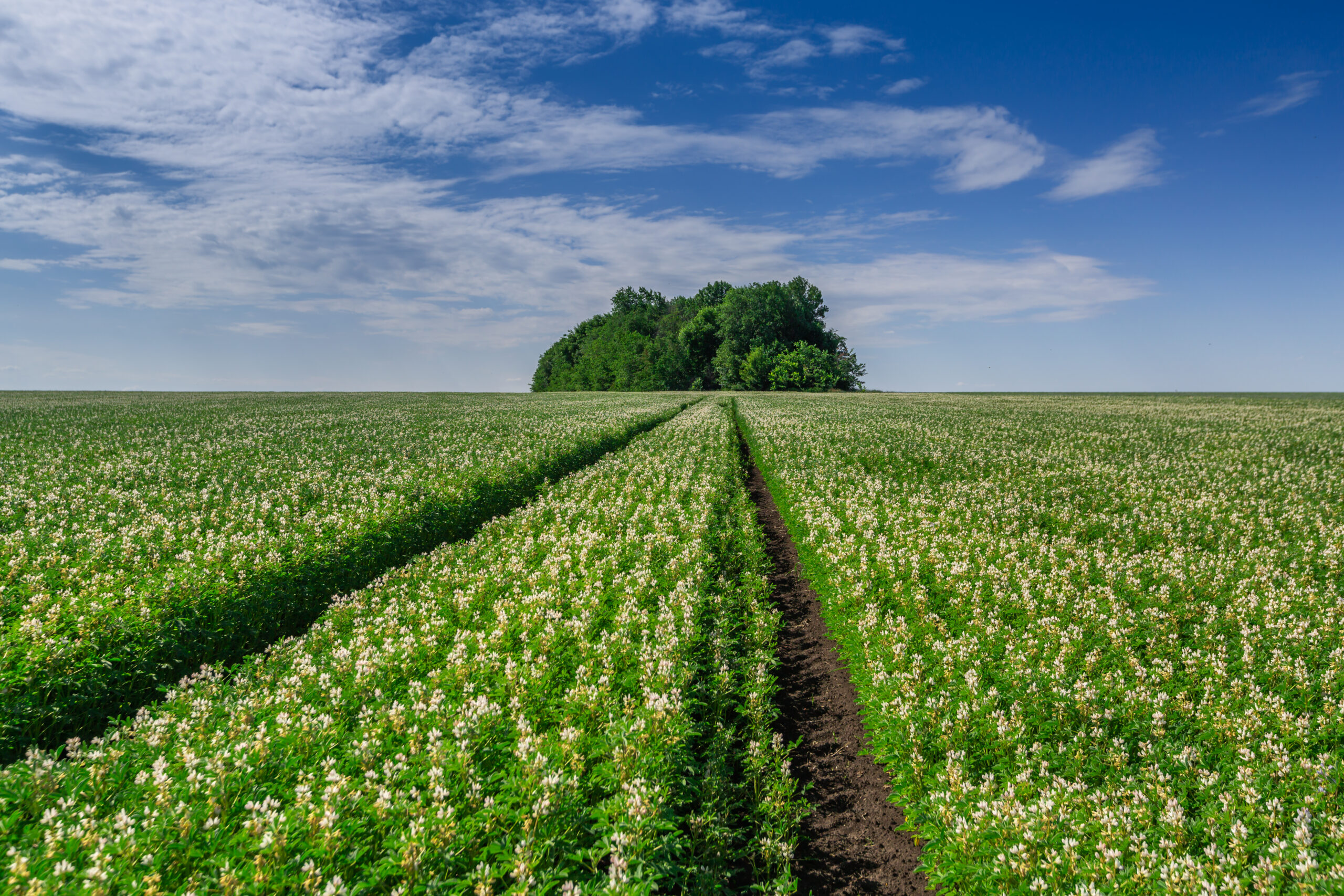The ministry of Agriculture wants the Netherlands to be less dependent on soya and for the area used to grow high-protein crops to increase by a factor of five. Soybeans, broad beans, lupins and peas are possible options, say applied researchers at WUR. Arable farmers have the know-how for new protein crops but dairy farmers have the land.
According to the ministry of Agriculture’s National Protein Strategy, Dutch farmers should be using 100,000 hectares 10 years from now to grow legumes rich in protein, five times the area currently in use. The Netherlands wants to be less dependent on imports of protein-rich raw materials, in particular soya. To encourage cultivation of these crops, the government has drawn up a Legume Green Deal with businesses in the protein supply chain.
‘Dutch soya can’t compete with Brazilian soya for animal feed’
Wageningen Plant Research in Lelystad does a lot of research on high-protein crops. For example, the institute used soya plants adapted to Dutch growing conditions to develop cultivation of the crop in the Netherlands. But this Dutch soya has not been a success so far, and the area under soya production has actually declined in recent years. ‘Dutch soya can’t compete with Brazilian soya for animal feed,’ says research manager Chris de Visser. ‘Yields in the Netherlands are 2.5 to 3 tons per hectare on expensive land, whereas in Brazil you get an extra ton per hectare and production costs are much lower. Dutch farmers don’t earn enough from that, so they prefer to grow cereals.’
Prefer grain
To help understand why grain is the first choice, De Visser explains the cropping plan used by Dutch farmers. They invariably grow potatoes and onions, which are the real cash crops. They alternate these crops with wheat. This cereal is easy to grow, gives relatively high yields of 9 to 10 tons per hectare, suppresses diseases in other crops and combines well with green manure. Growing this grain is not hugely profitable, but it fits in well with the overall cropping plan. Farmers will only start growing more high-protein crops when they become an appealing alternative.
Broad beans are the most promising protein-rich crop at present. The plants are robust and do not easily become diseased, yields are about six tons per hectare and the crop can be used in baby food and meat substitutes, says De Visser. However, broad beans only contain 25 to 30 per cent protein compared to 50 per cent in soymeal (soya from which the oil has been extracted). So you need to make use of the starch in the bean as well, says Visser’s colleague Ruud Timmer. He studies ways of increasing the protein content of broad beans. Other researchers are looking at how to develop a production chain using beans in meat substitutes.
A third candidate that has been around for a while is the lupin. This legume has slightly more protein than the broad bean (30 to 35 per cent) but much lower yields of 2.5 to 3 tons per hectare. ‘Not enough,’ concludes De Visser.
Livestock farmers
A new candidate is the yellow pea. This crop is easy to grow and works well in a cropping plan in combination with grain but there are big harvest risks. Birds go for the peas. Also, the plant collapses as the crop ripens, so the machines are unable to harvest all the pods. An interesting but risky option, concludes Timmer.
‘Livestock farmers have the land, but arable farmers have the know-how’
The question with all the high-protein crops is how they fit in arable farmers’ cropping plans. De Visser does not see much scope in Dutch cropping plans. He believes there are more opportunities in typical cereal-growing countries such as France and Germany, where farmers are looking to diversify cropping plans that now rely on grain. According to him, there is a place in the Netherlands for pulses such as broad beans and lupins, but mainly on livestock farms.
Will it work?
As Timmer explains, high-protein crops are a good fit in a cropping plan with grass and maize. ‘Dutch dairy farmers like grass and that produces the most protein. But farmers still have to give the cows protein-rich concentrates, especially in winter, to maintain protein levels in the milk. Now they use protein from soymeal that they buy in, but they could grow the protein themselves.’
But there is a problem. ‘Livestock farmers have the land for these crops but arable farmers have the know-how. So they need to work together,’ says De Visser. For example, a dairy farmer could outsource cultivation of a protein crop to a neighbouring arable farmer.
But dairy farmers can’t ignore market forces either: can the animal feed they grow themselves compete with imported animal feed? Timmer sees opportunities first of all in the organic sector. ‘Organic farmers have been using legumes to extend their cropping plans for years. These crops fix nitrogen, improve the soil quality and have scented flowers that attract insects. So they also play a role in maintaining biodiversity. That’s in keeping with the sustainable aspect of organic food. But are consumers willing to pay more for milk from cows that eat locally grown feed?’
‘At the moment, conventional dairy farmers and arable farmers will only start growing more protein-rich crops if they are forced to do so by new laws or if they get financial aid encouraging them to do so,’ says De Visser. Not surprisingly, he calls the plan to have 100,000 hectares used for high-protein crops in the Netherlands — five per cent of all agricultural land — ambitious.

 Foto: Shutterstock
Foto: Shutterstock